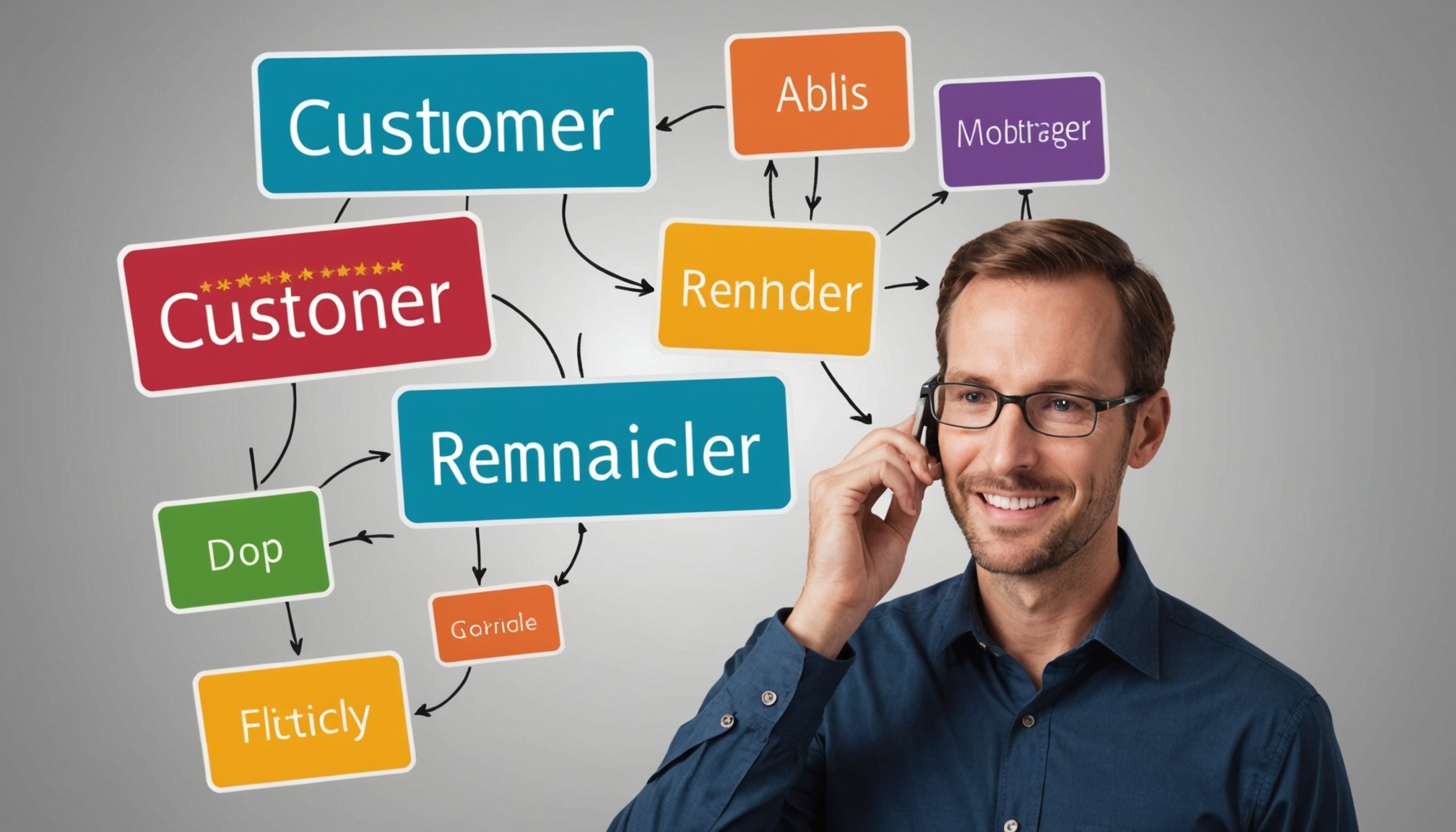Customer reminders do more than just notify—they build trust, reduce no-shows, and boost engagement when crafted thoughtfully. Keeping messages clear, personal, and aligned with your brand increases responsiveness. Integrating automation tools like GoReminders ensures timely, effortless communication that saves time and strengthens customer relationships, making every reminder a valuable touchpoint rather than a nuisance.
Importance of Customer Payment Reminders in Business Operations
Effective payment reminders play a crucial role in maintaining healthy cash flow and fostering positive customer relationships. Timely reminders help reduce overdue payments, ensuring businesses receive funds promptly, which is vital for ongoing operations.
Click here for more info.
In the same genre : How Does UK Business Marketing Evolve in the Digital Age?
The strategies for crafting these messages involve personalized, clear communication via multiple channels such as email, SMS, and portal notifications. Personalization boosts engagement, making customers more receptive to reminders.
Essence of strong reminders includes concise language, impactful call-to-actions, and polite tone, avoiding annoyance or confusion. Automated reminder systems save time and reduce manual effort, allowing small business owners to focus on core tasks.
Incorporating multi-channel approaches increases reach and response rates. Integration with CRM tools and real-time payment status alerts further streamlines processes and enhances customer experience.
Reminder scheduling best practices, including optimal timing and frequency, are critical to avoid customer fatigue. Well-designed reminders improve collection rates and support ongoing client satisfaction, especially when messages are polite and customer-friendly.
Best Practices for Crafting Effective Payment Reminder Messages
Principles of clarity, politeness, and brevity drive the most effective reminder message templates. Start each customer notification with personalized details—using the recipient’s name, the payment amount, and due date ensures your message feels tailored rather than generic. A specific call-to-action, such as “Please settle your invoice by the due date to avoid service disruption,” keeps communication clear and action-oriented.
Also to read : Top strategies for creating impactful customer reminders
Tone matters: When writing overdue payment notification emails or a final reminder notice, adopt a friendly but authoritative style. This approach maintains customer rapport while reinforcing the importance of timely payment. Reminder content tone tips recommend concise subject lines and straightforward language to capture attention without overwhelming recipients.
Personalization in reminder communications is best achieved with tags that automatically insert customer-specific information. Automated payment reminders benefit from scheduling at intervals such as three days and 24 hours before due dates, with a gentle reminder sent if overdue. Following reminder frequency guidelines, space reminders to avoid customer annoyance and keep engagement high.
Take a multi-channel reminder approach for maximal reach—combine SMS, email, and even in-app alerts. Customer notification software and payment reminder app for customers should support cross-device delivery and real-time payment status alerts, maintaining consistency and accessibility. Integrating reminders with CRM systems or accounting tools simplifies managing payment reminders online and tracking responses.
Tools and Software Solutions for Automating Customer Reminders
Choosing a payment reminder app for customers streamlines how businesses manage overdue payment notification emails and reminder message timing strategies. Leading platforms like GoReminders, Square Appointments, and Bonsai simplify scheduling and automating reminders across SMS and email, allowing organizations to set up tailored customer notification software for all scenarios.
Features Breakdown
Customizable templates in payment reminder app for customers support dynamic tags—such as {{First Name}} and {{Payment Due}}—helping ensure each automated payment reminder feels personal. Tracking reminder responses is enhanced through automation, where reply options and response management in customer notification software provide clear pathways for both parties. Flexible scheduling offers recurrent reminders, escalation processes, and optimized timing to fit every business.
Industry Applications
Automated payment reminders serve diverse sectors including home services, clinics, wellness studios, and consultancies. Integration with CRM systems and online booking means managing payment reminders online becomes seamless. Case examples show businesses benefit from reminder scheduling best practices: routine reminder cycles and quick escalation increase collection rates and foster satisfaction.
Customer Feedback and Effectiveness
Clients report notable reductions in missed payments and improved communication using a payment reminder app for customers. Automated payment reminders not only save time, but also demonstrate ROI, especially when cost considerations or SMS expenses matter. Insights from customer notification software highlight reduced no-shows and smoother operations, underlining the value of well-designed reminder message timing strategies.
Legal and Ethical Considerations in Payment Reminders
Legal Compliance
Automated payment reminders and customer notification software bring many benefits, but compliance with regulations is a must. Laws set firm limits on how often collection notices can be sent, and specify the content of each reminder message. Privacy and data protection in reminder messaging are required: always safeguard customer identity and financial details when using a payment reminder app for customers. Customers must be able to opt out of digital payment reminder methods. Clear identification—such as including company and sender names in every notification—reduces risk and builds trust.
Best Practices for Compliance
Crafting polite payment reminders means using neutral, professional language in all automated payment reminders. Always present easy unsubscribe and opt-out options, whether reminders are delivered by email, SMS, or customer SMS payment alerts. Maintain transparent, traceable communication records in payment reminder portals so that each step in the reminder escalation process is well documented.
Avoiding Legal Risks
Avoid legal risks by following local rules on payment deadline reminders and reminder frequency guidelines. Only send overdue payment notification emails and reminders about overdue invoices at intervals allowed by law. Proper tracking of each customer engagement through reminders—and saving all reminder message examples for businesses—protects you if disputes arise.
Ethical Engagement and Customer Satisfaction
Balance assertiveness and courtesy by making reminder content tone tips a priority. Automated payment reminders should feel like a helpful service, not a pressure tactic. Personalization in reminder communications, gathering customer feedback on reminders, and updating templates regularly help keep reminders friendly and effective, increasing payment collection while supporting customer satisfaction.
Enhancing Customer Experience with Well-Designed Payment Reminders
A payment reminder app for customers must deliver effective, polite communication while ensuring timeliness. Designing reminder notifications centers on clarity and brevity—successful reminder message length optimization keeps texts under 32 characters or emails under 120 words to respect customer attention spans. Critical content includes customer name, sender identification, the payment’s purpose, and a clear call-to-action. Politeness and brand voice play key roles in crafting polite payment reminders, reducing friction and encouraging positive interactions.
Personalization in reminder communications improves response. Using dynamic tags in customer notification software, like {{First Name}}, segments recipients based on payment history or behavior. This enables reminder scheduling best practices: send reminders at proven optimal intervals—such as three days, then 24 hours before a due date. Mobile-friendly layouts and streamlined response actions (e.g., “Reply C to confirm”) further boost customer engagement through reminders.
Tracking reminder responses is essential. By integrating customer reminder automation tools, businesses analyze response times and adjust reminder frequency for best results. Automated follow-up cycles and response analytics help refine strategies. Continuous feedback loops, gathered from recipient interactions, ensure the process evolves—avoiding customer annoyance with reminders while supporting stronger cash flow management for both sides.
Implementation Tips for Effective Reminder Campaigns
Establishing an efficient customer reminder system hinges on automation and careful planning. Automated payment reminders and customer notification software enable streamlined processes that save time and reduce manual errors. Setting up these workflows with a robust payment reminder app for customers helps business owners configure sequences that trigger reminders at key stages—initial reminders before due dates, gentle nudges when payments are overdue, and clear final reminder notices.
Integration is key for scaling reminder campaigns. Syncing scheduling with accounting or CRM systems ensures real-time payment status alerts and allows payment deadline reminders to closely reflect actual customer interactions. Using effective reminder message templates within your system injects consistency while personalizing each communication, especially when fields such as name or invoice number are dynamically inserted.
Troubleshooting is a routine part of managing payment reminders online. Issues such as non-delivery of customer SMS payment alerts or customer complaints must be addressed quickly. Adapt reminder frequency guidelines to avoid overwhelming recipients and maintain a customer-friendly reminder wording that encourages engagement rather than irritation.
Continuous optimization involves A/B testing and segmenting reminders. Tracking reminder responses lets you refine message length, timing, and the use of multi-channel reminder approaches. Monitoring outcomes through customer reminder analytics helps elevate collection rates and improve customer retention through gentle reminders, ensuring lasting positive business relationships.








